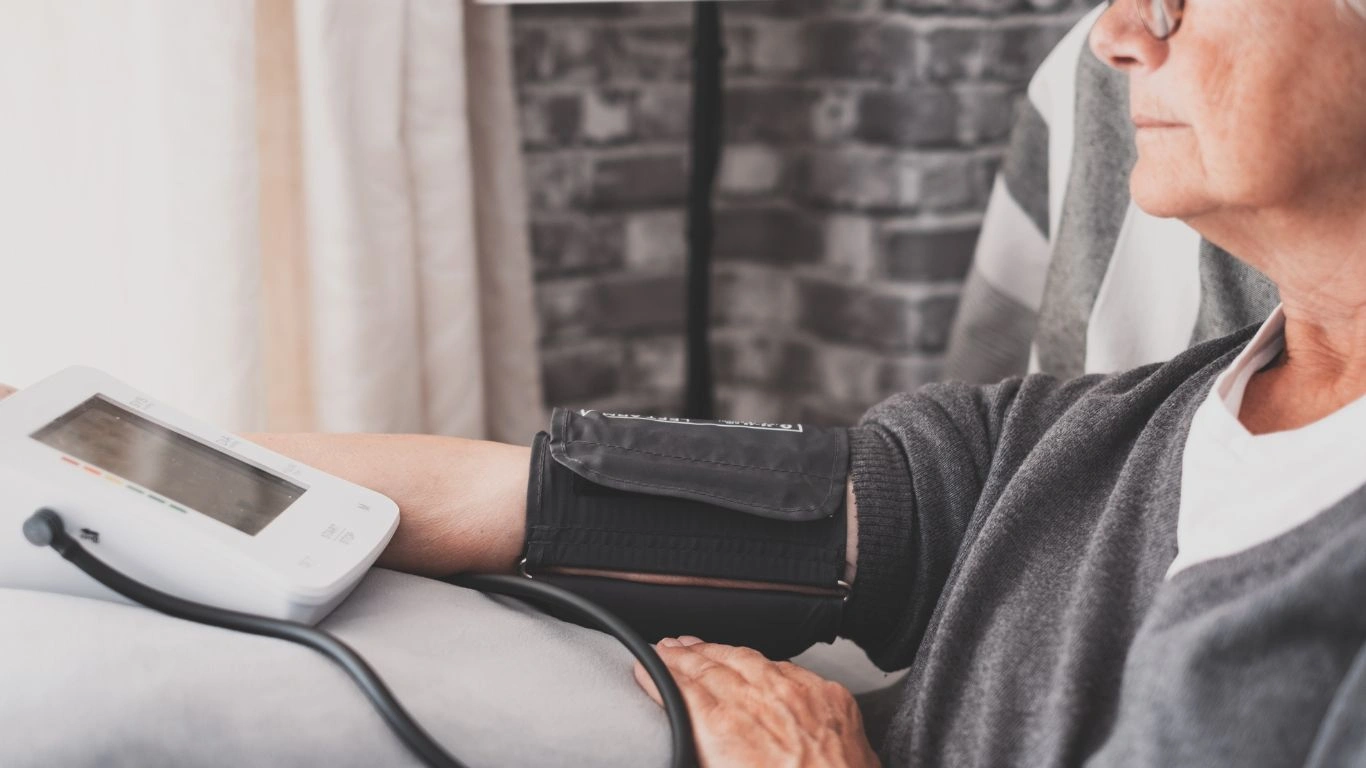Meditation Techniques for Blood Pressure – A Simple Guide to Managing Your Health
Looking to lower your blood pressure naturally? Meditation might just be your secret weapon. Here’s how different meditation techniques can help manage your blood pressure and improve your overall health.
When it comes to managing high blood pressure, we often think about medication or lifestyle changes, but there’s another powerful tool that’s sometimes overlooked: meditation. Meditation has been proven to reduce stress, which in turn can lower your blood pressure. If you’re looking for a natural way to control your blood pressure, meditation could be a great addition to your routine. In this article, we’ll dive into some of the best meditation techniques for blood pressure, explain how they work, and offer practical tips to help you get started.
Why Meditation Helps with Blood Pressure
Before we jump into the specific techniques, let’s take a quick look at why meditation can be so effective in managing blood pressure.
Stress is a big culprit when it comes to raising blood pressure. When you’re stressed, your body goes into “fight or flight” mode, which releases stress hormones like adrenaline and cortisol. These hormones can cause your blood vessels to constrict, leading to an increase in blood pressure.
Meditation, however, helps to activate your parasympathetic nervous system—the part of your body responsible for “rest and digest.” By calming your mind and slowing your breathing, meditation can reduce the production of stress hormones and help relax your blood vessels, which in turn lowers blood pressure.

Top Meditation Techniques for Lowering Blood Pressure
There are several types of meditation that can help with blood pressure, and the best part is, you don’t need any special equipment or experience to get started. Whether you’re a beginner or someone who’s practiced for years, there’s a meditation technique for everyone. Here are the top meditation techniques to try:
1. Mindfulness Meditation
Mindfulness meditation is one of the most popular forms, and it’s also one of the easiest to get into. It involves focusing on the present moment—paying attention to your breath, your body, and your surroundings without judgment.
How it helps: By focusing on the present moment, you take your mind off stressors and worries, which can reduce anxiety and lower blood pressure. Mindfulness can also help you develop a greater sense of calm and awareness, which is ideal for long-term blood pressure management.
How to practice:
- Find a quiet place to sit comfortably.
- Close your eyes and take a deep breath.
- Focus on your breath. Notice how it feels as it enters and leaves your body.
- If your mind starts to wander, gently bring it back to your breath.
Start with 5-10 minutes a day and gradually increase the duration as you get more comfortable.

2. Deep Breathing (Pranayama)
Pranayama is a breathing technique that originates from yoga. It focuses on controlling your breath, which can help calm the nervous system and lower your blood pressure.
How it helps: Deep, slow breaths activate the parasympathetic nervous system, which relaxes the body and reduces stress. When done regularly, pranayama can help you manage your blood pressure and improve overall heart health.
How to practice:
- Sit comfortably with your spine straight.
- Inhale deeply through your nose for a count of 4, allowing your lungs to fill completely.
- Hold the breath for a count of 4.
- Exhale slowly through your mouth for a count of 6.
- Repeat this cycle for 5-10 minutes.
3. Guided Meditation
If you’re someone who struggles with focusing or simply prefers a bit more structure, guided meditation can be a great option. In a guided meditation session, an instructor or recording will lead you through various techniques to calm your mind.
How it helps: Guided meditation helps you focus by providing instructions and visualizations, which can reduce mental clutter and stress. This method can be particularly helpful if you’re new to meditation or want to explore different styles.
How to practice:
- Find a comfortable space where you won’t be disturbed.
- Close your eyes and listen to a guided meditation recording (there are plenty of free ones available on YouTube or meditation apps like Headspace).
- Follow the instructions to focus on your breath, body sensations, or visualization exercises.
4. Loving-Kindness Meditation (Metta)
Loving-kindness meditation, or Metta, involves focusing on feelings of love and compassion towards yourself and others. This technique can help you shift away from negative thoughts and foster a sense of emotional peace.
How it helps: By cultivating love and kindness, Metta meditation can reduce stress and anxiety, both of which contribute to high blood pressure. It’s especially beneficial for people who have trouble managing anger or frustration.
How to practice:
- Sit comfortably and close your eyes.
- Begin by silently repeating phrases like “May I be happy,” “May I be healthy,” or “May I live with ease.”
- After focusing on yourself, gradually expand your loving-kindness towards others, such as loved ones, acquaintances, and even those you may have conflicts with.
- Repeat for 10-20 minutes.
5. Yoga Nidra
Yoga Nidra, also known as “yogic sleep,” is a deep relaxation technique that combines guided meditation and body awareness. It’s a great way to de-stress and unwind.
How it helps: Yoga Nidra helps lower stress levels by guiding your body into a state of deep relaxation. This technique has been shown to reduce both systolic and diastolic blood pressure by encouraging full-body relaxation.
How to practice:
- Lie down in a comfortable position (ideally on your back).
- Close your eyes and focus on your breathing.
- Follow a guided Yoga Nidra session (available online or in apps).
- Allow yourself to relax fully, focusing on different parts of your body as instructed.

Tips for Success with Meditation
Meditation is a skill that takes practice, so don’t get discouraged if you don’t see immediate results. Here are a few tips to help you succeed:
- Be consistent: Try to meditate at the same time each day to create a routine.
- Start small: If you’re new to meditation, start with just 5-10 minutes a day and gradually increase the time.
- Stay patient: It might take a few weeks to notice changes in your blood pressure. The key is consistency.
- Use apps: If you’re struggling to stay focused, apps like Calm, Insight Timer, or Headspace can guide you through your practice.
Conclusion
Meditation is a powerful and natural way to lower blood pressure. Whether you choose mindfulness, deep breathing, or other relaxation techniques, the key is regular practice. By incorporating meditation into your daily routine, you can improve your heart health and enjoy a more relaxed, stress-free life.
FAQs
- Can meditation really lower my blood pressure? Yes, regular meditation helps reduce stress and relaxes the body, which can significantly lower blood pressure over time.
- How often should I meditate to lower blood pressure? For best results, aim for at least 10-15 minutes of meditation each day.
- Is mindfulness meditation the best technique for blood pressure? Mindfulness is highly effective, but other techniques like deep breathing, yoga nidra, and loving-kindness meditation can also be beneficial.
- Can meditation be used alongside medication for blood pressure? Absolutely. Meditation can complement medication by helping to lower stress and promote relaxation, but always consult your healthcare provider first.
- What’s the best time of day to meditate for blood pressure? The best time to meditate is whenever you feel most relaxed, but many people find early mornings or evenings before bed work best.
References
- American Heart Association (2023). Managing High Blood Pressure with Lifestyle Changes. Read Article
- National Institute on Aging (2024). Meditation and Stress Reduction: The Benefits for Your Heart. Read Article
- Harvard Health Publishing (2024). Meditation for Heart Health. Read Article
Disclaimer
The information provided in this article is for educational purposes only and should not be considered a substitute for professional medical advice. Always consult with a healthcare professional before making any changes to your treatment plan, especially regarding blood pressure management.

Dr. Gwenna Aazee is a board-certified Internal Medicine Physician with a special focus on hypertension management, chronic disease prevention, and patient education. With years of experience in both clinical practice and medical writing, she’s passionate about turning evidence-based medicine into accessible, actionable advice. Through her work at Healthusias.com, Dr. Aazee empowers readers to take charge of their health with confidence and clarity. Off the clock, she enjoys deep dives into nutrition research, long walks with her rescue pup, and simplifying medical jargon one article at a time.






